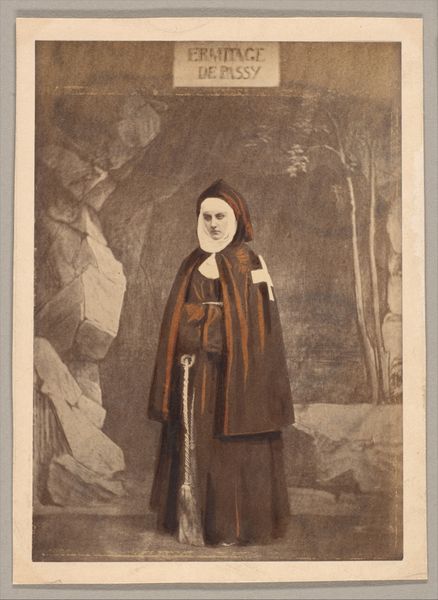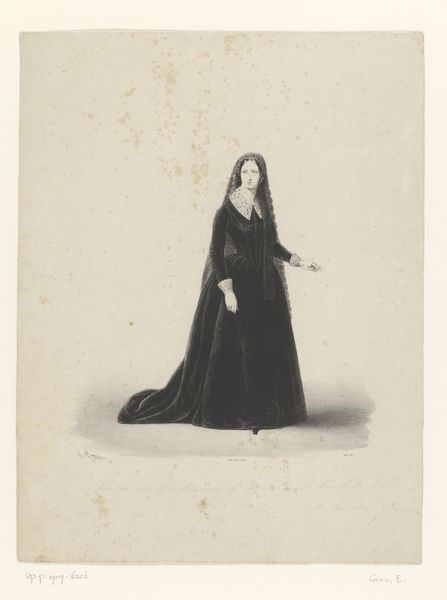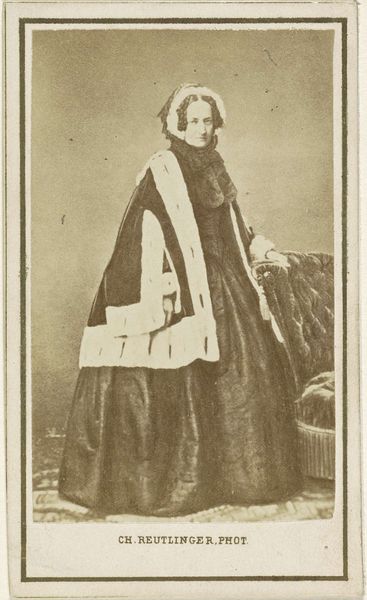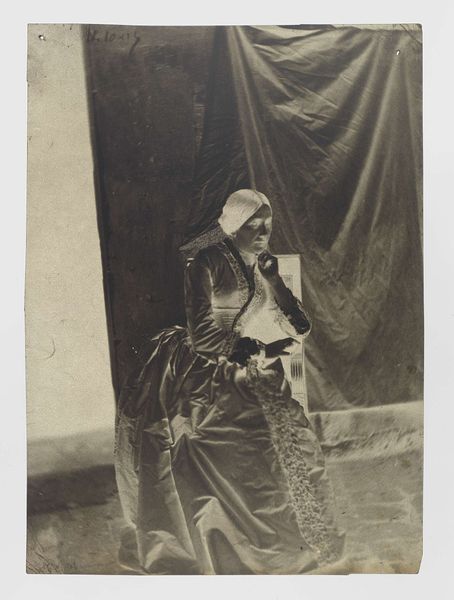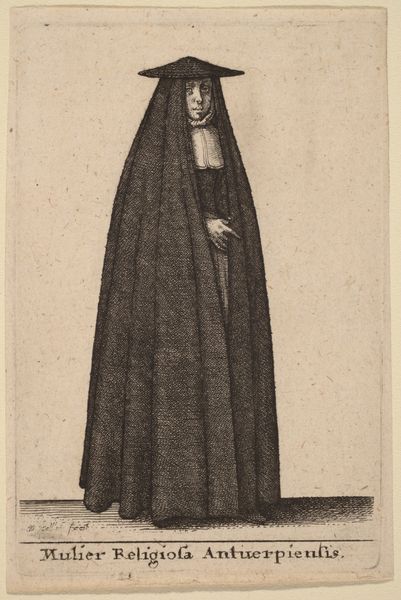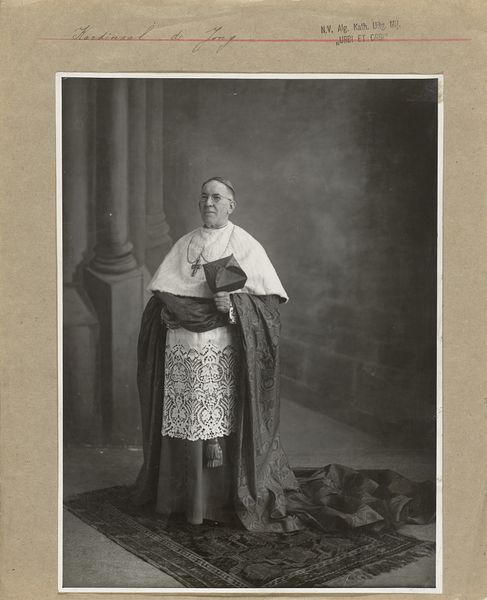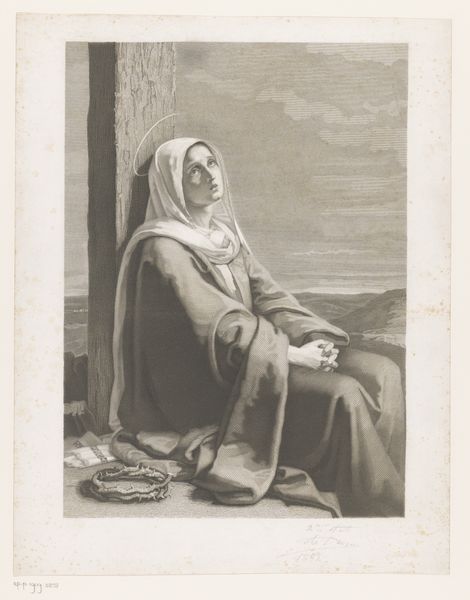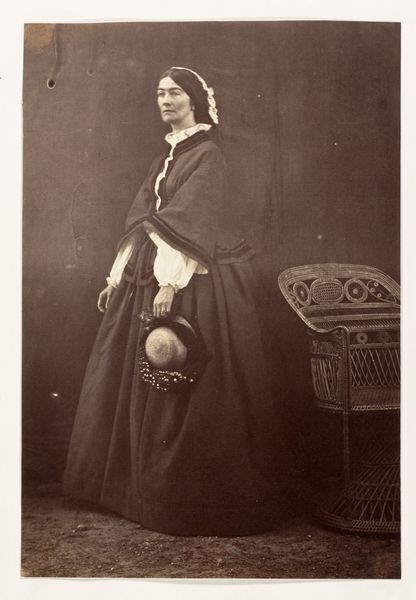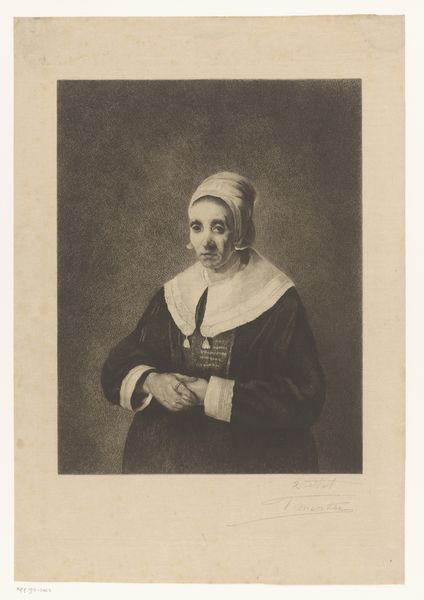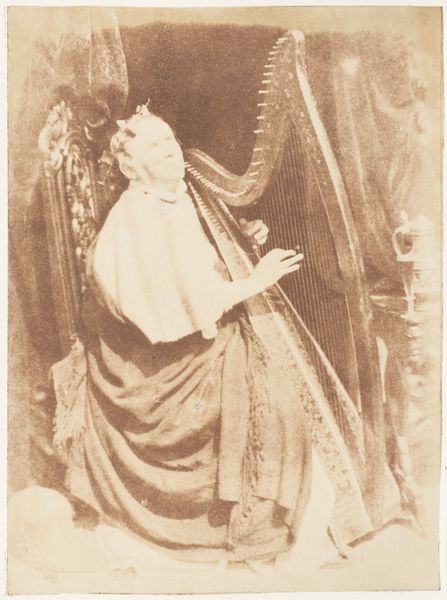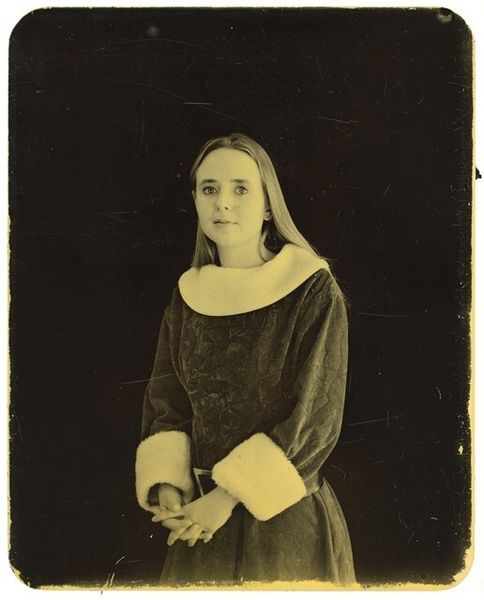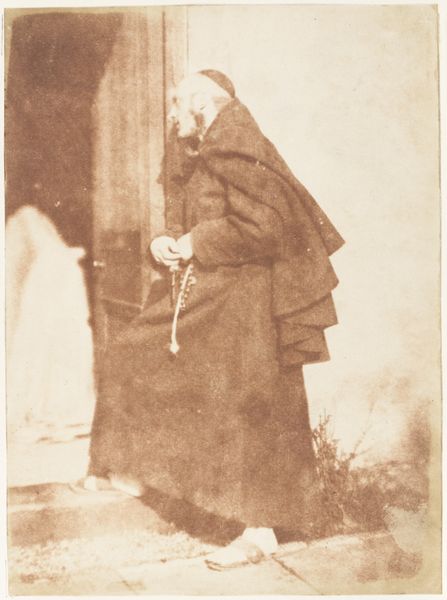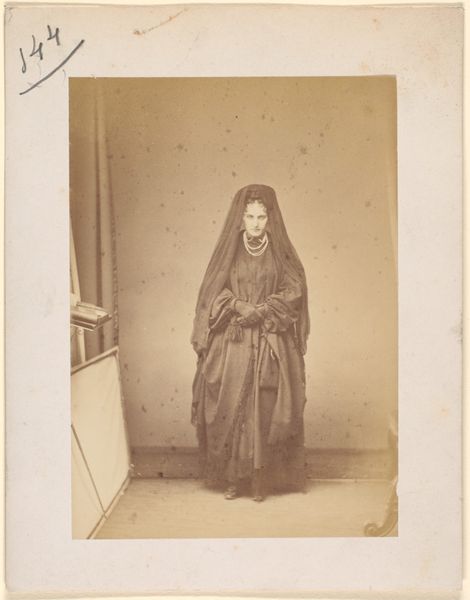
Copyright: Public Domain
Editor: This is Pierre-Louis Pierson’s photograph, "Soeur Elize," created sometime in the 1860s. It's a gelatin-silver print, currently held at The Met. It’s a compelling image, but something about the theatrical backdrop strikes me as a bit…staged. What do you see in this piece? Curator: Indeed. The painted backdrop immediately evokes a sense of artifice. It contrasts so strongly with the figure of Soeur Elize herself, drawing our attention to the performance of identity. Consider the sign above, "Ermitage de Passy." Ermitages—or Hermitage—historically offer solace and spiritual refuge. Does this constructed setting enhance or diminish that sense of authentic experience? Editor: I see what you mean. The cross on her cape is such a striking symbol of faith and devotion, and yet the backdrop seems to undermine that. Why use such a obviously fake background? Curator: Precisely! It calls attention to the layered nature of visual representation and, arguably, the complicated construction of piety itself. Think about how religious orders used symbols to project a sense of steadfastness, tradition and belonging. This theatrical backdrop—deliberately artificial—suggests that perhaps such displays of religious conviction also involve an element of...constructed symbolism, cultural memory, you might say. Do you see that operating here? Editor: That’s fascinating. It's almost as if the image is asking us to consider what is authentic versus what is performative in religious life. The staged background amplifies, rather than distracts from, the symbolic power. I’m so glad you pointed this out; I'll never look at staged portraits the same way! Curator: I’m glad I could show you new dimensions of it. I am now compelled to analyze contemporary notions about constructed realities and individual expressions, too!
Comments
No comments
Be the first to comment and join the conversation on the ultimate creative platform.
